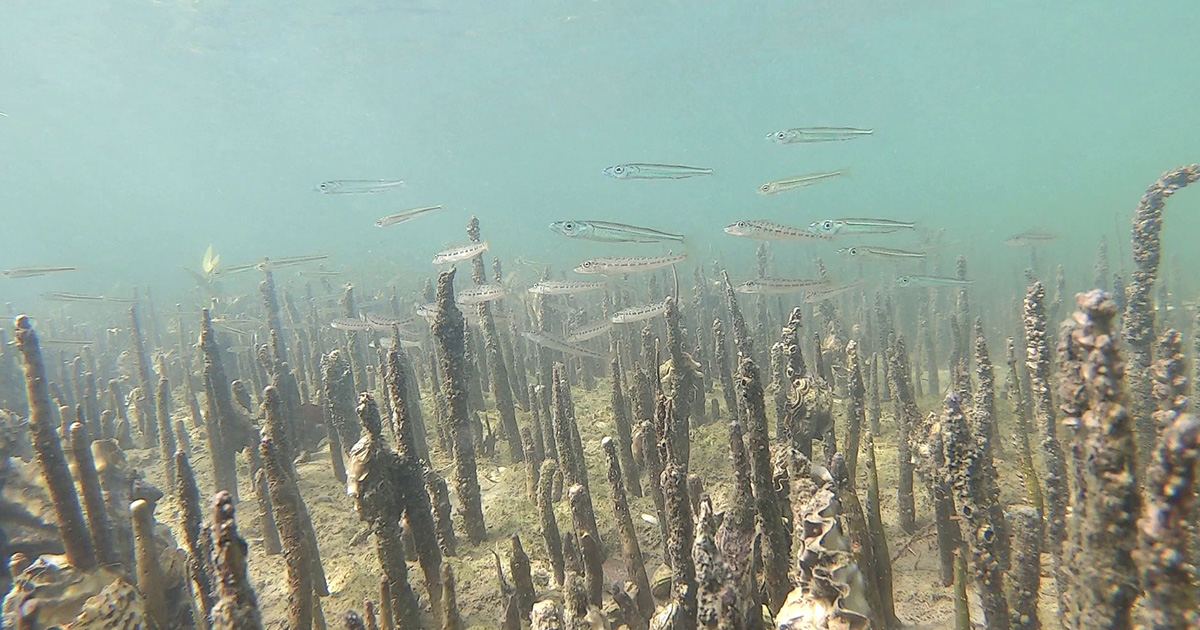Local shellfish including native razorfish and flat oysters, and feral pacific oysters, are showing strong ecosystem benefits for marine species within the Port River estuary ecosystem in Adelaide—with Flinders University researchers also discovering an exotic whelk that has found a foothold in the popular coastal area.
Environmental monitoring of the Port Adelaide marine environment, which features nearby natural assets including remnant mangrove forests and the International Bird and Dolphin Sanctuaries, has seen many changes in water quality and species composition over the years.
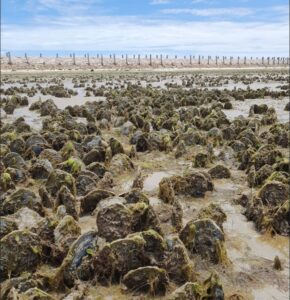 Razorfish bed at Outer Harbor. (Image credit: Brad Martin, Flinders University)
Razorfish bed at Outer Harbor. (Image credit: Brad Martin, Flinders University)
This led Flinders University Ph.D. candidate Brad Martin, from the Ecosystem Resilience research group, to conduct fieldwork of the different shellfish reefs throughout the Port River earlier this year to assess the species using these poorly understood habitats.
Following the outbreak of disease in feral oysters, the South Australian Government introduced bans on collecting shellfish including oysters, mussels and razorfish in the Port River in 2018. Around the same time, local community groups also began native flat oyster restoration projects, with native shellfish reefs once common to Australia’s coastline.
As well as finding high numbers of native fishes and invertebrates, the fieldwork also found several invasive species using the feral oyster habitat, including the first detection of Hercules club whelk (Pyrazus ebeninus), which was “likely introduced through the ballast water from a shipping vessel.”
“At present, these intertidal species are unlikely to have significant negative impacts on other species but could spread beyond the Port River in the future,” he says.
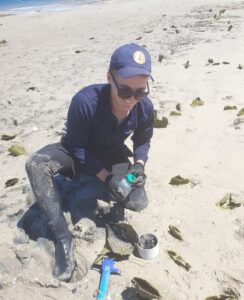 Bradley Martin conducting fieldwork on the razorfish and oyster beds returning to Port Adelaide. (Image credit: Brad Martin, Flinders University)
Bradley Martin conducting fieldwork on the razorfish and oyster beds returning to Port Adelaide. (Image credit: Brad Martin, Flinders University)
“The establishment of species from the east coast like the mud whelk and Sydney cockles is also an indication of warmer conditions. Until recently, these species only appeared in the SA fossil record and had died out during one of the previous ice ages.”
The Hercules club whelk is a large marine snail that can grow up to 10 cm in length and are common to estuaries on the eastern seaboard.
He says the benefits of more shellfish in the area include improved water quality from their filter feeding and providing habitat and nursery grounds for other species including recreationally important ones like whiting, bream, and blue swimmer crabs.
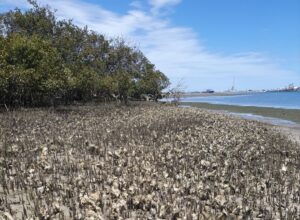 Introduced pacific oysters have established near remnant mangrove trees. (Image credit: Brad Martin, Flinders University)
Introduced pacific oysters have established near remnant mangrove trees. (Image credit: Brad Martin, Flinders University)
Bradley Martin’s research work from the Port River ‘density and death: the habitat function of intertidal razorfish (pinna biocolor) beds’ recently won the Fisheries Research Development Corporation (FRDC) Prize for Best Oral Presentation at the Australian Marine Sciences Association conference on the Gold Coast.
His supervisor Dr. Ryan Baring also presented on ‘sediment stabilization of the restored shellfish reefs,’ from research conducted on the Glenelg shellfish reef, with Associate Professor Graziela Miot da Silva, from the Beach and Dune Systems Laboratory at Flinders University.
In the two years since construction, Dr. Baring says oysters are now growing on the restored Glenelg shellfish reef.
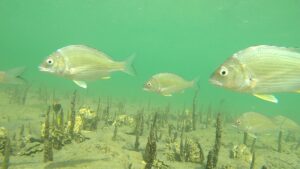 Bream swimming near Torrens Island in the Port River estuary. (Image credit: Brad Martin, Flinders University)
Bream swimming near Torrens Island in the Port River estuary. (Image credit: Brad Martin, Flinders University)
“The restored Glenelg shellfish reef has lots of oysters growing that are contributing to an ecologically important nutrient sink on the seafloor, which is important for turning bad nutrients from stormwater runoff into useful nitrogen in the sea and atmosphere,” he says.
“We have also identified a reliable hydrodynamic and sediment model to performance check and fine-tune the Glenelg Shellfish Reef to improve its ability to stabilize sediments that are extremely challenging to manage along highly developed metropolitan coastlines under climate change.”


